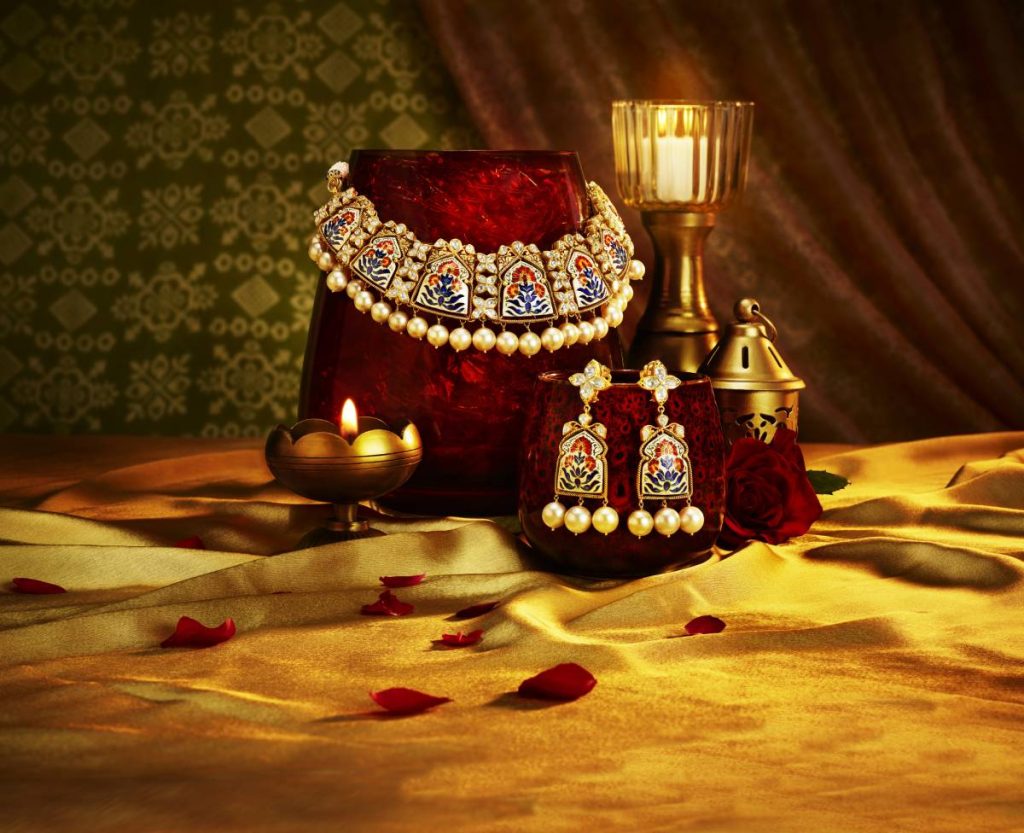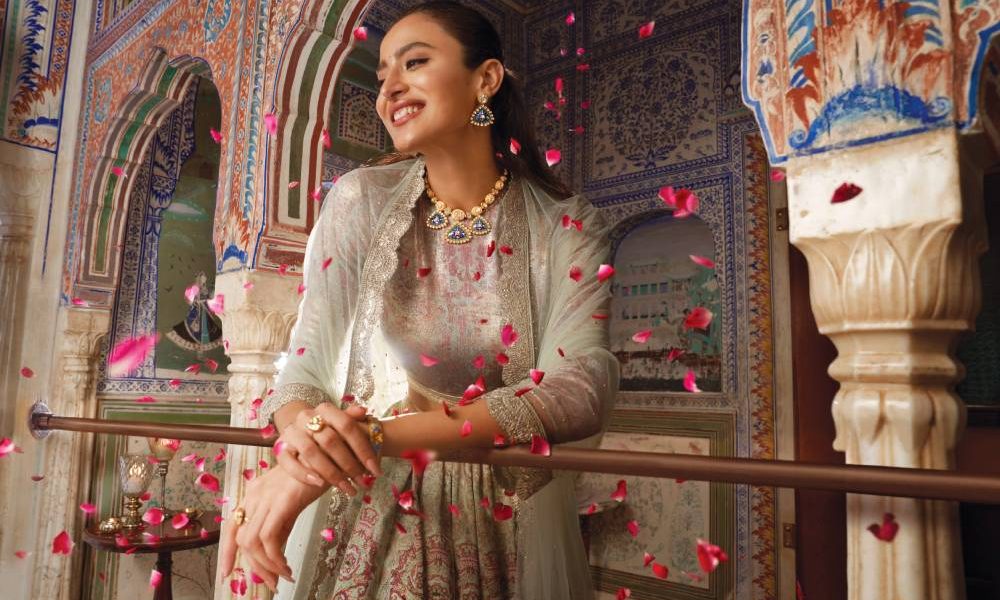Tanishq’s new art-inspired Alekhya collection is an aesthetic blend of old and new Indian that helps you to amp up your festive look this year.
Alekhya, Tanishq’s new gold collection pays tribute to Indian art forms – Picchwai and Miniature paintings. Each and every piece is handcrafted to perfection and narrates of the past in contemporary formats.
Abhishek Rastogi, Head of Design, Titan Company Limited, spoke to Solitaire International about the making of the collection that took nearly 10 months to complete.
What is the inspiration behind the new festive collection Alekhya?
Alekhya means silent poetry, and the inspiration is borrowed from ancient painting styles of India – Pichhwai and Mughal Miniatures. Through this collection, we are trying to glorify the golden lineage of the Indian art … it’s a concept that has not been spoken of before so, vividly and so widely. These paintings have inspired us to get some unusual forms highlighted with enamel.
What type of enamelling techniques are used in this collection?
The type of enamelling employed for this collection is the traditional one – with khudai, chitrai works. We have also used painting enamelling. However, the patterns are very different from what we regularly find in jewellery.
It was simpler to draw the jewellery forms with paintings on paper than render it on the workbench. Karigars, who are used to certain kind of patterns since years, had to unlearn their process. So, literally, there were some four to five iterations before we could finalise each piece.
A lot of detailing has gone behind the scenes in terms of experimenting with colour palettes, which are a little more contemporary. We have stuck to neutral pastel shades,
How long did it take to bring out the collection?
From concept to realization, it took almost 10 months. It’s not a limited edition because we believe in democratizing designs. The collection is crafted in 22-karat and 18-karat gold, and it is launched for the festive category, more in the ethno-contemporary space with a blend of geometric and soft contours and organic patterns.
How have you married old concepts with modern formats?
The silhouettes are not symmetric, but they are a mix of organic contours blending with soft geometric patterns. It is modern but extols the old-world art forms of detailed paintings. We have made jewellery relevant to today’s woman.
Here are some stunning versatile jewellery trends by Tanishq that you can add to your ethnic numbers for this festive season:



Pearls are back in vogue – Pearls are definitely in and are having their time to shine again. The pearl piroi has its own old world royal charm and with modern updates of coloured stones and enamel, it’s modernized contemporary silhouettes allow you to wear and style them in variety of ways. Pearls have always been a timeless classic and perfect for any woman who exudes grace.
Floral motifs – With the monsoon coming to an end and little time for winter to come knocking at our doors, the festive season is the perfect time to relish the beauty of floral patterns and welcome autumn in all its glory. The beauty of nature comes alive through floral inspirations and will add layers of style and grace to any outfit you choose. Contrasting colors of blue and pink preserve the liveliness of floral designs, such as delicate lotus blooms in a calm talai. Additionally, floral motifs are versatile and is sure to look equally good with an Indian attire as well with ethno contemporary outfits.
Pichhwai (also pichwai, pichhavai, pichhvai, pechhavai etc), literally meaning ‘that which hangs from the back’ from the Sanskrit words “Pichh” means back and “wais” means hanging, are large devotional Hindu painted pictures, normally on cloth, which portray Krishna.
Mughal miniatures were small (many not more than a few square inches), brightly colored, and highly detailed paintings mostly used to illustrate manuscripts and art books. Despite their tiny sizes, they are incredibly precise, with some lines painted using brushes composed of a single hair. The Mughal style of miniature painting was responsible for the amalgamation of indigenous themes and styles along with Persian and later European themes and styles.


